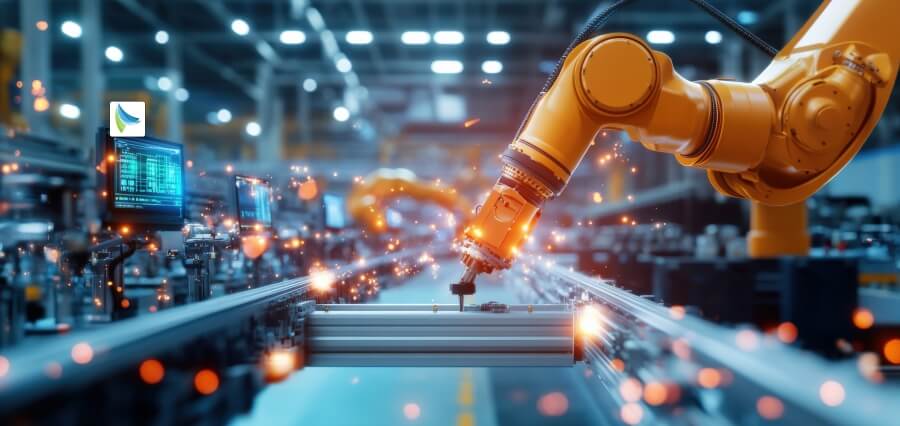In the constantly changing world of industrial change, waves of manufacturing innovation are now no longer niceties—necessities for competitiveness. From intelligent factories and artificial intelligence-based quality control to sustainable materials and responsive supply chains, manufacturing is experiencing a renaissance today that is transforming how firms compete, expand, and thrive in the global economy.
This article discusses how such innovation trends are remapping the manufacturing landscape and why companies must keep pace or lag.
The Paradigm Shift from Efficiency to Intelligence
Manufacturers in the past were concerned with efficiency only—reducing wastage, reducing costs of production, and streamlining workflows. As much as these remain important, manufacturing innovation trends have introduced a new era when intelligence, information, and flexibility come into prominence.
Smart manufacturing, powered by the Industrial Internet of Things (IIoT), uses networked sensors and real-time analytics to monitor and control every aspect of manufacture. With the capacity to predict failures, make adjustments automatically, and even communicate with each other, machines can maximize uptime and productivity levels beyond what was ever thought possible just a decade ago.
This shift makes production proactive instead of reactive, and firms are competitive in anticipating market demand, minimizing downtime, and becoming operationally agile overall.
The Emergence of Sustainable and Circular Production
Not only is sustainability now a corporate obligation—it’s a competitive advantage. Perhaps the most significant trend of manufacturing innovation is embedding sustainable approach and circular economy logic into mainstream business.
Firms these days are also designing their products from cradle to grave—raw material extraction through the recycling of end-of-life products. For instance, the use of biodegradable plastic, recycled metal, and energy-efficient production helps reduce carbon footprints of firms while concurrently drawing environmentally conscious consumers and investors.
In addition, closed-loop production and zero-waste manufacturing lines are also going mainstream, showing that green manufacturing not only pays, it’s better for the environment too.
Digital Twins and Simulation-Led Design
The other manufacturing innovation trend is employing digital twins—computer models of physical systems that simulate, predict, and optimize performance in real-time. Digital twins allow manufacturers to test scenarios without interfering with live operations, without wasting time or money, using this technology.
For example, a firm can simulate the performance of a new assembly line under various loads, workloads, or product mixes prior to installation. It is a risk reduction and return on investment optimization. With AI and machine learning, digital twins allow continuous improvement through real-time feedback from the field.
Computer simulation is not confined to hardware—it is even done on products. Engineers are now able to simulate stress levels, material strength, and energy use, speeding up the product development and prototype stage by a huge amount.
Workforce Transformation Through Innovation
Innovation is not just dependent on materials and machines; it’s also severely affecting the workers. As the trends in manufacturing innovation evolve, workers with digital skills are more in demand. Human and machine cooperation has reached the forefront, with human tasks transforming from hands-on to knowledge-based and decision-making focused.
Virtual reality (VR) and augmented reality (AR) are also being utilized to support jobs as well as training, and it is simpler to retrain workers at a faster pace. Collaborative robots or cobots assist humans in performing repetitive tasks while staff members do higher-value work such as innovation and quality check.
Through the empowerment of employees with digital tools and data-driven insights, manufacturers are not only boosting productivity but also supporting a culture of innovation that will fuel long-term success.
Agile Supply Chains Driven by Real-Time Information
Supply chain disruption on a global scale has proven that flexibility and resilience are essential. In response, manufacturing innovation trends have moved towards agile and transparent supply chain strategies.
Advanced analytics, blockchain, and AI-based forecasting technology are employed to track vendor performance, anticipate shortfalls, and optimize logistics routes in real-time. It enables manufacturers to react more quickly to fluctuations in demand, facilitate proactive risk management, and achieve continuity amidst market turbulence.
Additionally, additive manufacturing (3D printing) is becoming feasible for localized and on-demand manufacturing, cutting the reliance on distant suppliers and enabling stunning lead-time reductions.
Speed and Customization as Competition Weapons
Today’s customers expect products tailored to their specifications—and they want them delivered quickly. Mass customization is perhaps the most vibrant factory innovation movement, growing with ease. Technologies such as AI-based design, digital manufacturing, and modular manufacturing systems enable the small-series production of personalized products at mass production efficiency.
Whether it’s customized footwear, modular furniture, or automobile features, firms that can deliver customized experiences at the cost of sacrifice neither in terms of cost nor velocity possess a singular market advantage.
Conclusion: Innovation as the New Benchmark
The factory floor of today is revolutionizing dramatically. Trends in manufacturing innovation are helping companies break free from the old constraints and redefining what’s possible. From predictive maintenance with AI to environmentally friendly materials, to optimizing the supply chain in real-time, the trends are raising the bar on success.
In a world where competition is tougher than ever and customer expectations are changing faster by the day, innovation is no longer an organizational function—but a mindset. Such firms that embed innovation into its very culture, stay ahead of trending dynamics, and bet on people and technology will be running in the pack.
The future of producing things is for those who don’t just make things—but make them more intelligent, more rapid, cleaner, and more human-friendly than ever before.












